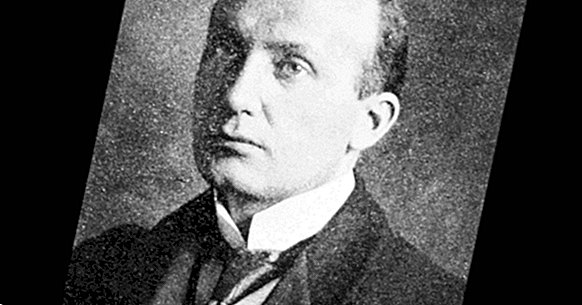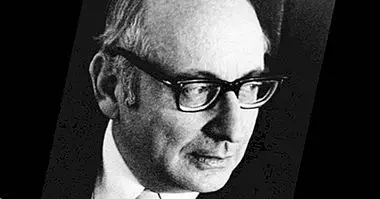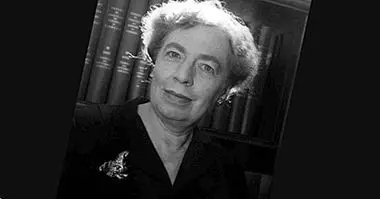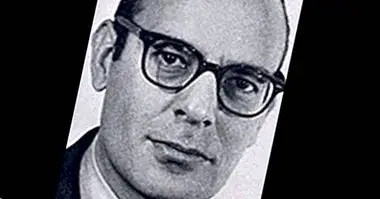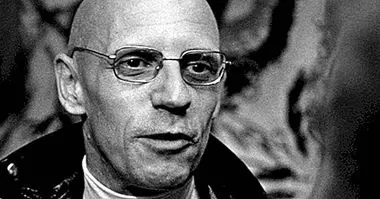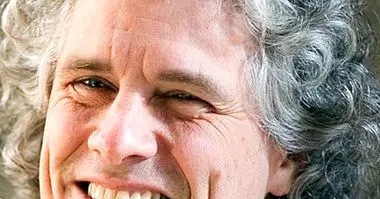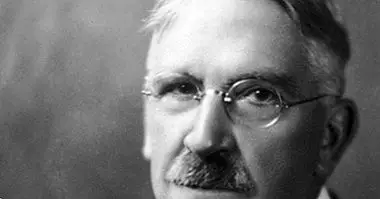Robert Sessions Woodworth: biography of this American psychologist
Robert S. Woodworth (1869-1962) was an American psychologist who laid the foundations of psychology with an eclectic focus. Throughout his career, Woordworth was interested in developing a unified theory of psychology based on scientific observations and the possibility of generalizing them. .
In this article we will see a biography of Robert S. Woodworth , as well as some of his main contributions to psychology.
- Related article: "History of Psychology: authors and main theories"
Robert S. Woodworth: life and work of this North American psychologist
Robert Sessions Woodworth was born on October 17, 1869 in Belchertown Massachusetts, United States.
In the year of 1891 he received a degree in philosophy from the Amherst College, and subsequently was trained in science and mathematics. In the year of 1895 started a specialization study in philosophy at Harvard University , which ended in 1896. His tutor had been the philosopher and scientist William James, who motivated him to doctorate in psychology.
Following this advice, Woodworth was formed at Columbia University under the direction of James McKeen Cattell , who was one of the main defenders of the scientific consolidation of psychology. Finally, Robert S. Woodworth received his doctorate in psychology in the year 1899, with an investigation on the precision of voluntary movement.
From this, Woodworth served as a professor at the same university, at which point he established a close professional relationship with another of the most representative psychologists of the moment: Edward L. Thorndike, with whom he carried out different studies in theories of learning . Among other things, they concluded that learning can not be transferred from one element to another, that is, learning a subject does not necessarily produce an improvement in general learning.
Subsequently he completed a postdoctoral training at the University of Liverpool, completing it in the year 1902. After this he returned to Columbia University to perform as a teacher, accompanied by his wife Gabrielle Schjoth. Robert S. Woodworth died on July 4, 1962 in New York City.
Professional work
In the year of 1914 Robert s. Woodworth he served as president of the American Psychological Association (APA, for its acronym in English), where he held constant discussions alongside other well-known psychologists such as Edward B. Titchener and Oswald Külpe.
On the other hand, in the context of the First World War and as it happened with other psychologists of the time, Woodworth participated in the design of psychological tests used to evaluate recruited men. Woodworth's Personal Data Sheet (Woodworth's personal data sheet) was the name that received the scale used for it.
Likewise, Woodworth served as head of the Department of Psychology at Columbia University for nearly a decade (from 1918 to 1927).
- Related article: "The 4 types of personality tests"
Dynamic or eclectic psychology
The main contribution of Robert S. Woodworth to psychology was the defense of what is necessary incorporate different approaches to have a broad understanding of psychology . At the beginning of the 20th century, Woodworth proposed a unified system of psychological thought. At the same time, he was against the dominant methodological determinism in psychology, and said that it was necessary to adopt an eclectic approach in the understanding of human behavior.
For example, he rejected McDougall's proposals that were heavily focused on innate components, and at the same time remained skeptical of John Watson's proposals , who emphasized the role of the environment in behavior. In the same sense, he distanced himself from Edawrd Tichener, who emphasized the study of consciousness about other aspects of the human being.
Woordworth argued that behavior was a function of environmental stimuli, but so was the composition of an organism and its own consciousness.
For this psychologist it was necessary to develop a "half-way psychology" that could be adapted or generalized to the interests of all human needs. In this sense, Woodworth considered that both thought and consciousness were legitimate objects of study in scientific psychology . The latter represented an important suggestion for the development of psychology of the time, which was among the debates about studying observable behavior or internal mental processes.
From this he developed two important constructs for psychology: the interactionist metaphor of "dynamics", to refer to the determining role of both nature and the environment; and an explanatory model of the latter under the formula of "Stimulus-Organism-Response" (S-O-R, for its acronym in English).
Outstanding works
Some of his most recognized works are Elements of Physiological Psychology, 191 and Dynamic Psychology, 1918, where analyzed the behavior and its relationship with physiological processes , as well as the relationship of these with introspective methods. It was in this work that Wood argued in an important way the need to connect all the previous elements in psychological interventions.
The book is also representative Psychology: A study of Mental Life, of 1921, where he argued that both inheritance and the environment are determining factors of human behavior, for which he developed the formula S-O-R.
This work became one of the reference texts of twentieth-century psychology and one of the most influential introductory writings in the professionalization of this discipline.
Bibliographic references:
- Roberth S. Woodworth (2018). Encyclopaedia Britannica. Retrieved September 28, 2018. Available at //www.britannica.com/biography/Robert-S-Woodworth.
- Roberth S. Woodworth (2013). New World Encyclopedia. Retrieved September 28, 2018. Available at //www.newworldencyclopedia.org/entry/Robert_S._Woodworth.

